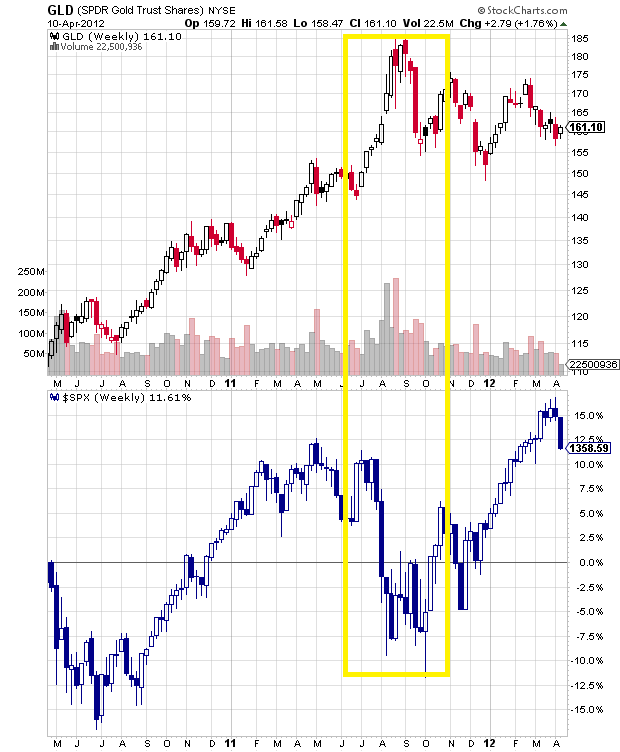Bull markets last long enough to erase the memory of most market participants of how it feels to be in a correction and what should be done.
Back in January this year, most people disbelieved the rally and were very cautious. The second half of 2011 was the definition of a trendless, high-volatility, choppy environment and over time it conditioned most of us to be very nimble and take profits quickly. Most breakouts failed, mean-reversion from overbought and oversold reading worked almost flawlessly.
As the bull market climbed a wall of worry, more and more people started to figure out that breakouts are actually working and delivering solid results.
In bull markets, corrections happen under the surface and take the form of sector rotation. When financials and tech took a breather, biotech and consumer discretionary took the leading role and the indexes barely budged. All dips were a great buying opportunity in hindsight. Somewhere along the way, people realized that instead of jumping from a setup to setup, they might be much better off just riding three or four strong stocks.
The market has been really accommodating in the first 3 months of the year, to a point that it created complacency. Naturally, when a shift in a character came, most people were slow to react.
We entered a choppy, high volatile environment, where many breakouts will be short-lived. We will see stretches of several red days followed by a pocket of green days that will continue long enough to confuse everyone.
Recency or our tendency to pay enormous attention to the most recent price action has huge influence on our psychology. A few red days in a row and everyone turns bearish and give up positions bought on a dip, just before the market is ready to bounce. A few green days and everyone thinks that all is well and new highs are on the horizon. Don’t judge the market based on one day of market action.
Trednless markets could be very stressful to those who don’t notice the change of market character and rethink their tactics. Stress leads to overtrading and the latter is a really dangerous endeavor in a choppy market environment. Overtrading leads to losses and losses lead to a loss of confidence, which is the last thing you want to happen to you, because your decisions will be ruled by fear and not rules.
Greed and fear often trump experience. The choices we make every day define the quality of our lives. We are in the business to make money, not to make trades.
Choose wisely. Do less.
